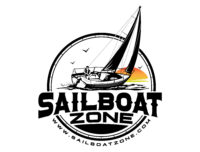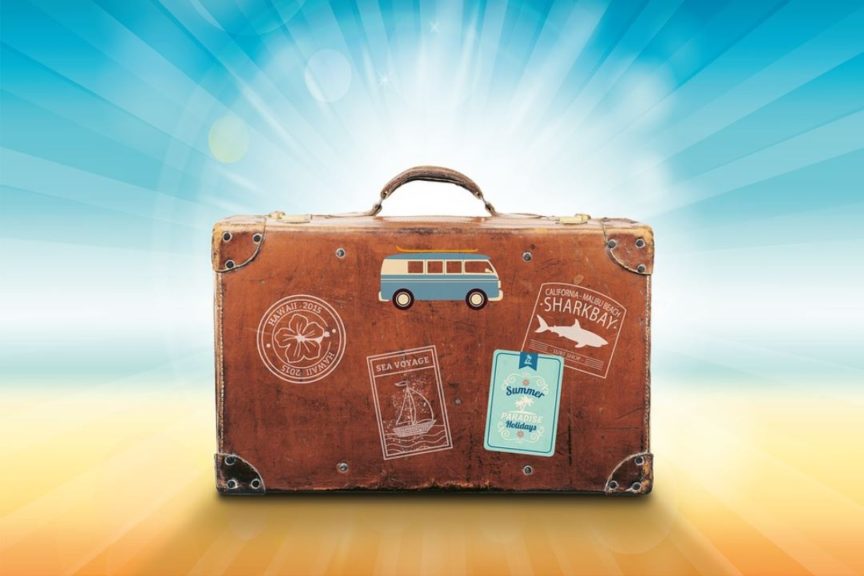It seems there are two kinds of crew on a sailboat. The first is an over-prepared rookie with 900 pounds of unnecessary gear. The other, an overly confident veteran sailor with what he feels are ‘just the basics’. The former packs for every eventuality, and in return, is only partially prepared for any of the actual realities of sailing. The latter, well, he/she is relying on what was packed and actually used on the last sailing trip. He won’t be making the mistake of over packing again.
There are obvious things you’ll pack . I don’t need to cover these things in depth. Clothing for all temperatures, your toothbrush, shoes or boots, a hat, and swimwear are part of any packing list.. Items such as compasses, charts, and handheld GPS units should be already on the boat. These items are part of the provisioning list for skippers before heading out. That’s not what this article is about.
This guide contains items you may not think of packing on a sailing trip. Instead, this guide is for the occasional sailor who wants to pack minimally, but still wants ensure nothing important is left behind. These are things that turn out to be indispensable once you are underway.
Personal Flotation Device
A Personal Flotation Device, also called a lifejacket or pfd, is likely to be one of the items already aboard the sailboat. It is in this list because not all pfds are created equal. Personal Flotation devices that live on the sailboat tend to be dirty, or smelly, or may just not fit. Use a pfd that is designed and set up for your weight and dimensions. A pfd is a great once-a-life purchase because you will not likely wear it out, and they don’t take up much space to store in the off season.
There are several styles of pfd to choose from, each with their own benefits and drawbacks. I would recommend an automatic self inflating pfd if you want a balance of comfort and safety. This kind of pfd has an open back, except for the center strap down the back that joins the waist band. If you are concerned about mobility or tan lines, and you must wear a pfd while on board, this is the best choice for you. In the event of an emergency where you need flotation, these pfds will self inflate.
The drawback to this kind of pfd is the possibility that it won’t self inflate. This is always a possibility. Not many of these pfds are faulty, but the worst time to discover that yours is, is when you need it most.
Insulated Coffee Cup
Coffee mugs are also likely to be a part of the provision list for the sailboat. But if you think about it for a second, a standard issue coffee cup that lives aboard a sailboat can be less than appetizing. Few things that you pack will remind you of the comforts of home like your own mug. It is always wise to pack something that is not made of glass, and ensure it has a water tight lid. One tip I’d also mention would be to find an insulated cup that has a carabiner attached. It is very handy to be able to clip your mug to the lifeline or backstay for a moment if you need both hands for something.
Water Bottle
A water bottle that is just for you is just as important as an insulated mug. Staying hydrated on the water can be a challenge. A water bottle that you are comfortable with is indispensable. Again, choose a water bottle that is not made of glass, or does not have any glass components. Also make sure the bottle has a water-tight seal and can be used with one hand. Just like the insulated mug, find a bottle onto which you can attach a carabiner. This will keep the bottle handy when you need both hands to complete a task. The carabiner clipped to some standing rigging or a lifeline will also keep the bottle off the deck and from underfoot.
Slippers
If you are going on an overnight trip, the evenings are a highlight aboard a sailboat. The boat will be at rest on the anchor, or tied up to the wharf. The business of sailing is over and it’s time to just relax and hang out. And nothing says ‘relax and hang out’ like a pair of your own slippers from home. I have appreciated my slippers in almost every sailing season. In fall or winter, you are typically wearing waterproof footwear, and waterproof means your feet are suffocating all day. Slippers allow your feet to breathe in the evening, while still retaining heat. In the summer, light slippers keep the mosquitoes and other bugs off your feet.
Ear Plugs
Ear plugs are another important item that you may not think to pack. Experience has taught me that ear plugs are in fact an indespensable part of your packing list. The primary use for earplugs is, of course, during the night while you sleep. You can expect to be in close quarters with others on the boat, and someone is bound to be a snorer. Beyond blocking snoring sounds, there are many noises that you hear during the night that you absolutely do not remember hearing during the day. One such noise is the hollow metallic bonging sound made by the hallyards, as the wind whips between them and the mast. Think: a toddler banging away on a fire alarm with a soup ladle. Another sounds to mute; the slapping of waves and ripples against the hull, and the creak of the mast as the boat lazily rolls in the breeze. These are not gentle relaxing sounds. They may as well be the sound setting of your bedside alarm every morning.
Earplugs are also useful during the day while under sail. If you are prone to earaches due to cold wind or water, ear plugs provide excellent “shelter” from the effects of the cold. Earplugs will take the very highest frequencies out of loud noises. It is still possible to wear them and communicate with your crew, however it’s not as clear as no earplugs at all. In some situations, I find myself alone at the tiller. The rest of the crew is below warming up, or passing the day playing cards or whatever. I find that earplugs are a great idea to keep my inner ears warm, since no one is trying to talk to me anyway.
Sunglasses
It seems there are as many varieties of sunglasses as there are people who wear them. When considering a pair of sunglasses for a sailing trip, I always recommend prioritizing your purchase in this order: polarized lenses, limited light leak through the sides and top, secure fit to your head, and of course a suitable style.
Experienced sailors often prefer Polarized lenses because they virtually eliminate glare. Think about how much glare your eyes endure in one day of sailing. There is the glare of the sun off the deck and cockpit of the boat, the glare off the mast and chrome of the push pit and pull pit. There is also the glare off the water which can be really strong at dawn and dusk. Polarized sunglasses allow your eyes and squint muscles to relax. This keeps you more relaxed overall, and attentive to the business of sailing.
When trying on glasses, be aware of light that is able to enter from the sides and top. In the sunglass store, this may not seem like a big deal. Sunlight shining into these areas can be very annoying and distracting. Choose glasses that hug the shape across your face, from ear to ear.
The fit itself, especially behind the ears is also critical. I have lost many sunglasses by turning my head suddenly or from looking down, then up quickly. Even reaching down from the cockpit to the water to retrieve something has claimed a pair or two. That is why I do a fairly vigorous head movement test to see if the glasses will fling off my face. I try as best I can to simulate the head motions of sailing while still in the store. This test filters out many possible contenders. The only thing more valuable to your eyes than a good fitting pair of polarized sunglasses, is the second pair you bring along. You will lose sunglasses!
Head Lamp
Many new sailors learn on their very first trip that if you want to stay on the boat, you need three points of contact. Two feet on the deck, one hand on the boat. This is true nearly all of the time, even when you go below while underway. That is why hands free devices are always preferred over their counterparts. This goes for light sources as well. A bright, light weight head lamp that fits comfortably is something that you will likely use every sailing day. Night time is an obvious time to use this device. If you are on anchor watch and need to traverse from the stern to the bow to check the rode, you will appreciate the headlamp.
One indispensable use for a head lamp is when you have to go into your lockers down below to look for something, or to do something. Maybe it’s a repair, or you are looking for a tool or some provisions. A head lamp is that one fantastic hands free device that you will be very glad you packed.
Wool Sweater
Wool has many advantages over synthetic materials. It has been a very common material for sailors both before and after synthetic fabrics came into being. Probably the best known advantage, when it comes to sailing, is the ability for wool to get wet and still be effective in retaining body heat. I have a wool sweater along for every sailing trip, regardless of the weather forecast, because it is so useful.
Wool is a natural fibre, which feels more in harmony with the natural landscape than synthetic materials. Wool doesn’t readily mold. It doesnt attract or keep bugs. It resists flame. . Should it somehow catch fire, if left alone it will not remain lit. I am a huge proponent of wool, as should any sailor be.
Rain or Wet Weather Gear
Rain gear is another must-have for sailing. When it’s raining, a proper fitting, comfortable set of pants and jacket are a must-have. I find that I get the most use and appreciation for rain gear when the winds are strong and the sea is rough. Occasionally rain will be the cause for donning rain gear, but sea spray off the bow while beating is just as likely a reason to suit up. When selecting rain gear, consider features such as wrist closures, a high collar, a hood that has fitting adjustments, and fleece lined pockets.
Look for jackets that can vent out the armpits and pants with pockets that open to your regular pant/shorts pockets underneath. Also make sure the pants you choose have an adjustable or Velcro cuff adjustment. It is important to layer your pants over your shoes or boots so water can’t drip down into them.
These are some of the immensely important items that you will need to bring on any sailing trip. Of course there are other items that you will need, but these are the things you will use on an everyday basis. Please comment below if there are any other less obvious, but still essential items that I should include in part 2.

